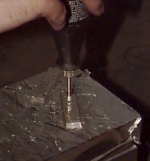
While it has been several years since manufacturers began moving to lead-free solder procedures, in part due to the European Union’s Restriction of Hazardous Substances Directive, some still believe myths that have long been inaccurate regarding the use of alloy joining materials that do not require flux and are based on lead and tin.
Temperatures Can Be Enough to Destroy Components
The first round of lead-free solder options to join metals and other materials were comprised of tin, silver and copper, which do have a slightly higher melting point of 217 degrees Celsius compared to existing solder’s 183 degrees Celsius. That disparity could cause problems regarding PC board damage.
However, newer products including several offered by S-Bond have significantly lower melting points that make it easier to join metals like aluminum. At the lowest temperatures, some materials can be joined at just 115 degrees Celsius.
Issues Regarding Silicon Will Require Other Materials
Silicon is similar to other materials in that there is a coating of a layer of the material that has reacted with the air. In many applications, joining would require flux that would help to “wet” the surface by removing that layer. Materials that use alloys of multiple metals such as cesium, gallium and magnesium can be used without flux, and without plating the silicon or silica surfaces prior to joining.
Electronic Manufacturing Processes Do Not Benefit from Lead-Free Solder
With the advent of solder alloys with lower melting points, companies can now join ceramics and metals and a variety of other components with less heat stress during the soldering process. Yet, as the size of electronics shrinks at a nearly exponential rate, conductivity concerns about older joining options are much less problematic.
The leads on printed circuit boards are now spaced very narrowly. When leaded solder is used, it can create unwanted connections between these elements, producing a higher rate of shorts compared to the newer technologies now available to people.
Prices of Lead-Free Solder Joining Solutions Are Prohibitive
The cost of S-Bond alloy joining materials are several times higher than for competing lead-based solder solutions, but as with any project, the price of one material does not tell the whole story. Since lead can be toxic, there are more protections required in terms of ventilation as well as government requirements for the disposal of these products. In the case of prototype runs or internal testing, materials offered by S-Bond can be recycled depending on the other components, which can also save money.
In addition, project designs where significant stresses may be put on various metals, the higher tensile strength of alloy joining materials can simplify workpieces compared to allowances that an engineer would have to make for weaker lead-based solders.
Tin-Lead Solder Joints Are More Immune to Environmental Factors
There have been concerns in the past that lead-free solders like those offered by S-Bond were more brittle than those using lead, but that was only the case several years ago. Now, with advances in engineering, the joining process is more consistent and the metals used are significantly stronger than with older solder options.
And as noted regarding electronics and stresses, new metal alloys limit the potential of lead shorts for printed circuitry, including joining semiconductors to a main plate. For industrial applications, the additional strength can mean using less material, saving companies money and affording them the opportunity to make significantly lighter weight products.
Other Benefits of Lead-Free Solder Versus Older Options
One of the biggest dangers of using lead-based solders is protecting employees who are working on it during and after the joining process. During the finishing process, older materials can only be leveled, rather than sanded, due to the possibility of lead particles escaping into the air. Another factor, especially with printed circuit boards, is the potential for moisture accumulation that can cause products to fail.
A second benefit is finishing. While machine shops offer a number of finishes, from powder-coating to painting, the former is often not possible for applications where tin-lead solder is used because the process can interact poorly with the soldering. On the other hand, many lead-free solder options can be used with a variety of coatings, and more importantly can be sanded down for a smooth and even finish.
Engineers and others who are looking to find the right lead-free solder products can contact S-Bond for a consultation. For more immediate assistance, call S-Bond Technologies at 215-631-7114 today.
